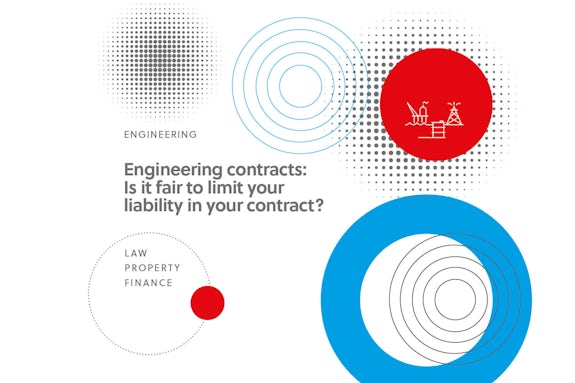
May 27, 2025

Having an overall limit on the liability of a supplier is generally standard practice.
It may seem like an odd concept – if the supplier of a product/installation has been responsible for £200,000 worth of losses, why is it fair to limit that liability to 100% of the contract price, if the contract price is only £20,000?
It’s a concept that some sometimes struggle to grasp – particularly when being squeezed by a client with seemingly more commercial leverage.
Where that commercial leverage comes from can go some way to providing the answer in some cases. A small player in an industry that has landed a contract to supply £20,000 worth of products will often not have pockets as deep as the client they are supplying to.
More important than that though is the question of insurance and the availability of insurance.
The supplier will be able to (and should) place insurance policies to cover its contractual and other trading risks, but if each of its contracts has unlimited liability, it may then not be able to place insurance policies because insurance providers simply won’t accept unlimited liability or the premiums will be so high that it will be cost prohibitive.
What that then would boil down to is:
This is all against the backdrop that the client probably has (or should have) the risk covered under its own insurance policy.
A more sensible approach is for the supplier to have its liability capped – it shouldn’t be absolved of liability because it needs to have some “skin in the game” to incentivize meeting performance standards consistently to provide good products and services.
100% of contract price was mentioned above – that’s an approach which is readily taken across different industries, but is not by any means a “one size fits all” solution.
Losing 100% of your contract price is a significant hit for your company to take, but it shouldn’t mean insolvency in the same way that 1,000% (or more) maybe would. And that capped liability can be covered by insurance.
Whilst it may seem like an odd concept, it is perfectly reasonable for the supplier’s liability to be capped. Contracts with no limitations would result in increase to cost and risk, which could lead to less providers, which decreases supply and competition, which in turn increases costs again – a vicious circle could ensue.
Sharing the risk and the reward is a much more equitable approach.
If you would like further information on the topic discussed in this blog, please contact Calum Crighton:
Please ask me how our new Virtual Counsel offering can help you
Email: ccrighton@gilsongray.co.uk Phone: 01224 011687 / 07841 920101.
You can also view Calum’s profile by clicking here.

Calum is a Partner, heading up our Oil & Gas/Energy team. He is recognised as a leader in his field and well-respected for ability to advise all companies from oil & gas majors right through to SMEs, with a particular expertise in decommissioning.